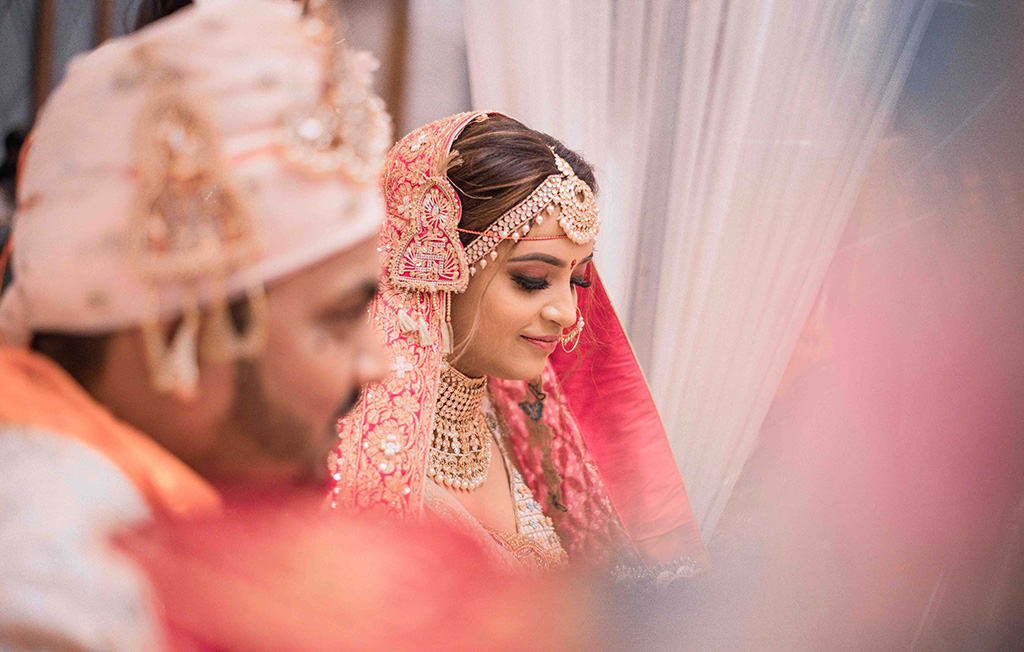Introduction
wedding photography is a unique form of visual storytelling that requires an understanding of both artistic and technical principles. Among the most crucial elements of wedding photography are movement and time, as they play significant roles in preserving the essence of a wedding day. Movement in wedding photography isn’t just about physical motion; it also encompasses the flow of emotions, energy, and the passage of time throughout the event. There are two primary types of movement that every wedding photographer must consider: physical movement (the movement of people and objects) and emotional movement (the shifting emotions and energy of the event).
In this essay, we will explore the two main types of movement in wedding photography—physical and emotional—and how they contribute to creating an impactful visual narrative. By mastering these two forms of movement, wedding photographers can create more dynamic, compelling, and emotionally resonant images that will serve as lasting memories for the couple.
Physical Movement in wedding photography
Physical movement refers to the actual motion of people, objects, and elements within the wedding scene. This includes the actions of the bride and groom, the wedding party, guests, and even the flow of the ceremony and reception. Photographers must capture this movement in such a way that it conveys the dynamics of the event and helps tell the story.
1. The Processional: The Bride’s Walk Down the Aisle
One of the most iconic moments of any wedding is the bride’s walk down the aisle. This is a moment filled with anticipation, excitement, and emotion. The wedding photography must be prepared to capture both the bride’s physical movement and the emotional weight of the moment. The key here is to focus on how the bride moves—slowly, carefully, and with grace—while also paying attention to her facial expressions, the reactions of the groom, and the emotions of the guests.
The challenge for the wedding photography is to capture the perfect timing. If the photographer shoots too early or too late, they may miss crucial moments like the groom’s first glance at the bride or the emotional expressions of the parents as they watch the bride approach. The use of shutter speed is vital here. A faster shutter speed can freeze the movement of the bride, while a slower shutter speed can create a sense of elegance and flow.
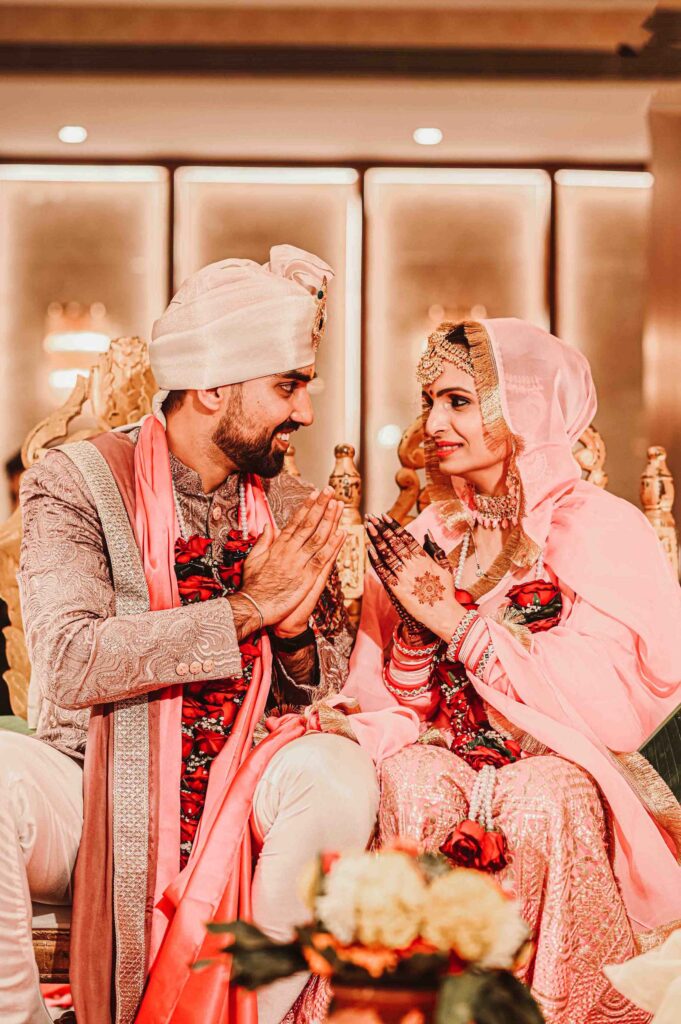
2. The First Dance: Movement and Emotion in Sync
The first dance is another significant moment that involves both physical movement and emotional depth. During this moment, the couple shares an intimate, choreographed or spontaneous dance, often accompanied by music that holds sentimental value. For photographers, this moment presents a unique challenge: capturing the movement of the couple while also preserving the emotions behind it.
The wedding photography can capture physical movement in different ways, depending on the technique they wish to employ. Using slow shutter speeds can create a blurred, soft effect that emphasizes the fluidity of the couple’s movements. Alternatively, a fast shutter speed can freeze a specific gesture, such as the bride’s twirl or the groom’s tender touch, preserving the emotion in a sharp, defined moment. The photographer may also consider using creative angles to enhance the physical movement—shooting from above, from the side, or capturing the reflection of the couple on a polished floor, for example.
3. Dancing and Celebration: Capturing Guests in Motion
wedding photography are dynamic events, with guests moving throughout the venue, interacting, dancing, and celebrating. These movements are filled with joy and energy, which photographers can use to infuse their images with life. Group dances, for instance, often provide opportunities for dynamic shots where the movement of people in unison creates a sense of rhythm and energy.
Capturing the movement of guests at the reception can tell a story about the atmosphere of the celebration. Dancing, laughing, and spontaneous moments such as children playing or guests mingling are crucial to the overall mood of the event. In this case, a photographer must not only have technical expertise in capturing movement but also possess a keen awareness of the energy in the room. A photographer must know when to use continuous shooting mode, which allows them to capture multiple frames in quick succession to increase their chances of getting the perfect shot.
Emotional Movement in wedding photography
While physical movement is about capturing the actions of people, emotional movement is about the shifting emotional landscape of the wedding day. Weddings are charged with emotions—joy, love, excitement, and sometimes even nervousness or sadness. Emotional movement involves the ebb and flow of these feelings, and the photographer must be able to identify and capture these moments of emotional intensity to tell a powerful visual story.
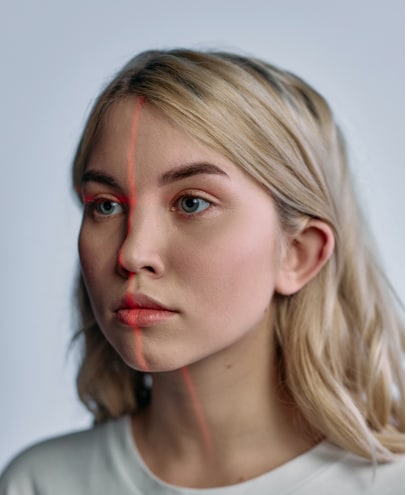
1. The Anticipation Before the Ceremony
The moments leading up to the ceremony are often filled with emotional tension and anticipation. For the bride and groom, this is a time filled with nerves and excitement. wedding photography can capture these moments through candid shots of the couple preparing, interacting with their families, or having quiet moments of reflection. These moments of emotional movement set the tone for the ceremony and provide depth to the wedding narrative.
For example, a wedding photography of the bride sharing a private moment with her father before walking down the aisle can encapsulate a mix of emotions—joy, pride, and nervousness—all through subtle, emotive body language. Similarly, capturing the groom’s expressions as he waits for the bride to appear can convey the nervous excitement of a man about to marry the love of his life. These moments aren’t posed—they are moments of raw emotional movement that reflect the anticipation of a life-changing event.
2. The Vows: Words and Emotions in Motion
The exchange of vows is arguably the emotional climax of the wedding ceremony. It’s a moment where two people express their love and commitment to one another in front of their loved ones. The emotional movement in this moment is palpable, as it marks the transition from individual lives to a shared journey. The wedding photography job here is to capture the raw emotion of the moment without intruding on its intimacy.
Photographers must anticipate the emotions that will unfold, from the couple’s facial expressions to the reactions of the guests. The emotional movement of the vows often comes in the form of tears, smiles, or laughter, and the photographer must be prepared to capture these fleeting expressions. The timing of the shot is crucial, as an emotional moment can pass in the blink of an eye. A close-up shot of the couple’s faces can capture the depth of their connection, while a wider shot that includes the guests can show how the vows impact the larger group.
3. The Reception: Joy, Laughter, and Tears
The reception is a celebration of the couple’s love, and it is often filled with joy, laughter, and emotional speeches. The first toast, family speeches, and the cake cutting are all moments filled with emotional movement. Capturing the laughter, tears, and joyful expressions of family and friends helps add depth and emotion to the wedding story. The wedding photography can use these moments to capture candid reactions that reflect the deep connection between the couple and their loved ones.
During the reception, the emotional movement is not only about the couple but also about the guests. For instance, the father-daughter dance is often filled with poignant emotions, as it marks a significant transition in the bride’s life. Photographers must capture the depth of these moments, balancing both the physical movement and the emotional undercurrent. Tears of joy, hugs, and spontaneous laughter are all forms of emotional movement that need to be captured thoughtfully to convey the heart and soul of the event.
Combining Physical and Emotional Movement
The most powerful wedding photography combine both physical and emotional movement, allowing the photographer to tell a comprehensive story of the day. The physical movements of the bride walking down the aisle, the couple’s first dance, and the guests celebrating provide the framework for the story, while emotional movements such as the anticipation before the ceremony, the exchange of vows, and the joy of the reception fill the story with meaning.
Photographers must seamlessly blend these two movements, ensuring that each image reflects the emotional energy of the moment while also capturing the physical action that brings it to life. This balance creates images that feel dynamic, alive, and true to the spirit of the day.
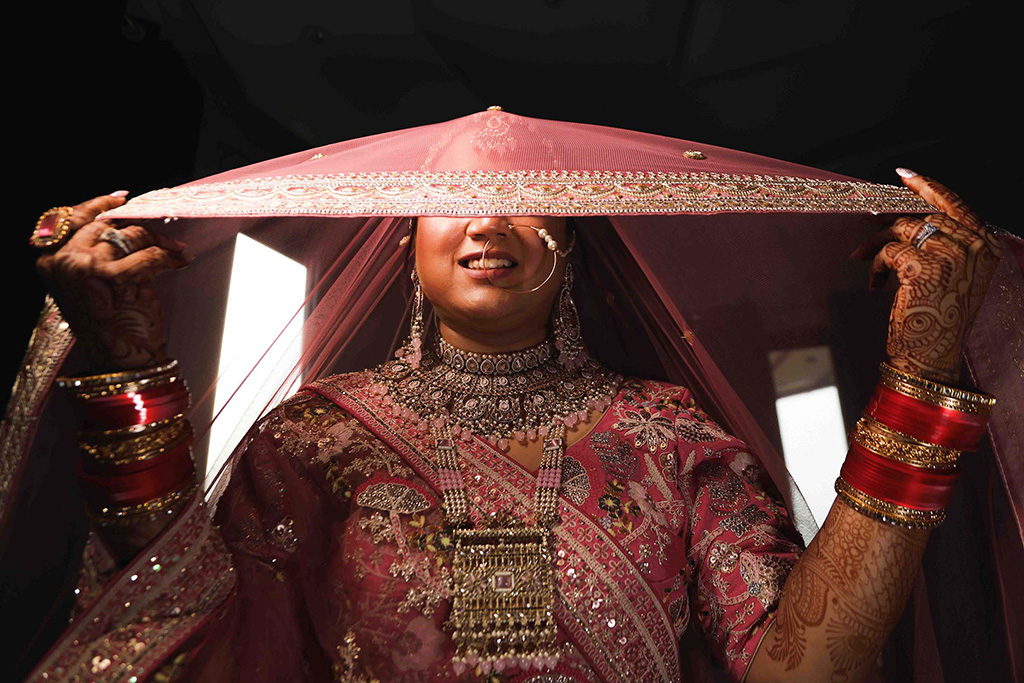
1. The Importance of Lighting in wedding photography
Setting the Mood
Lighting dictates the ambiance of a photograph. Soft, golden-hour lighting creates romantic and ethereal images, while dramatic uplighting can enhance a sense of grandeur during receptions.
Highlighting Details
Proper lighting ensures that key details—like the bride’s dress, floral arrangements, and table settings—are captured in their full glory. It brings out textures, colors, and intricate designs.
Guiding the Viewer’s Eye
Lighting helps direct focus within a frame. Techniques like spotlighting or backlighting can emphasize the couple, making them the focal point of an image.
Creating Emotional Impact
Different lighting styles evoke distinct emotions. Warm lighting conveys intimacy, while sharp contrasts can add drama or intensity to the moment.
2. Common Lighting Scenarios in wedding photography
Natural Light (Daytime)
- Outdoor Ceremonies: Bright sunlight can create beautiful, crisp images, but harsh midday light may lead to overexposed highlights and strong shadows.
- Golden Hour: The hour before sunset offers soft, warm light that flatters skin tones and adds a dreamy quality to photos.
- Overcast Skies: Cloudy weather acts as a natural diffuser, providing even lighting and reducing harsh shadows.
Indoor Lighting
- Churches and Halls: These venues often have limited natural light, requiring photographers to rely on artificial lighting or adjust camera settings to capture the ambiance.
- Reception Venues: Dimly lit spaces with candles, string lights, or uplighting create a romantic atmosphere but pose challenges in achieving sharp, well-exposed images.
Mixed Lighting
Weddings often feature a combination of light sources, such as natural light streaming through windows combined with artificial venue lighting. Managing these variations requires careful balancing to avoid color temperature mismatches.
Nighttime and Low-Light Conditions
Evening receptions, fireworks displays, and late-night dances typically occur in low-light settings. Photographers must creatively use flash, continuous lighting, or long exposures to capture these moments effectively.
3. Techniques for Adapting to Lighting Variations
Using Natural Light Effectively
- Positioning: Place the couple at angles that make the most of available light. For example, side lighting can add depth, while backlighting creates dramatic silhouettes.
- Reflectors: Reflectors help bounce light onto subjects, softening shadows and illuminating details.
- Diffusers: Diffusing harsh sunlight reduces glare and prevents overexposure, especially during midday shoots.
Mastering Artificial Lighting
- Flash Photography: On-camera and off-camera flashes provide controlled lighting in dim settings. Diffusers or softboxes can soften the intensity of the flash.
- Continuous Lighting: LED panels or portable lights offer consistent illumination, allowing photographers to compose shots more accurately in low-light conditions.
- Light Modifiers: Tools like gels, snoots, and grids shape artificial light to create specific effects or match the venue’s lighting.
Balancing Mixed Lighting
- White Balance Adjustments: Manually adjust the camera’s white balance to harmonize different color temperatures, ensuring consistent tones in the final image.
- Color Correction in Post-Processing: Editing software can help correct color inconsistencies caused by mixed lighting sources.
Low-Light Photography Tips
- Wide Apertures: Use fast lenses (e.g., f/1.8 or f/2.8) to allow more light into the camera.
- Higher ISO Settings: Increase ISO sensitivity to brighten images, balancing noise reduction in post-processing.
- Tripods for Stability: Long exposures benefit from a stable setup to avoid motion blur in low-light environments.
4. Creative Use of Lighting in wedding photography
Silhouettes and Backlighting
Positioning the couple against a strong light source, such as a sunset or a spotlight, creates striking silhouettes that add drama and artistry to the composition.
Light Trails and Bokeh
Using string lights or sparklers creatively, photographers can achieve dreamy bokeh effects or light trails, adding a magical element to the photographs.
Dramatic Shadows
Playing with light and shadow enhances depth and intrigue. Patterns from lace curtains or foliage can create unique shadow effects on the couple or the surroundings.
Lighting for Motion
Well-timed flashes or continuous lighting can freeze action during dances or create intentional motion blur for artistic flair.
5. Challenges in Managing Lighting Variations
Dynamic Wedding Timelines
Weddings involve shifting from one location to another, each with unique lighting conditions. Photographers must adapt quickly, often without the chance to test settings extensively.
Harsh Sunlight
Midday sun can cause squinting, harsh shadows, and blown-out highlights. Finding shade or using fill light helps mitigate these issues.
Color Temperature Discrepancies
Mixed lighting sources can result in unflattering color casts, such as yellowish tones from tungsten bulbs or greenish hues from fluorescents. Balancing these requires expertise in both shooting and editing.
Unpredictable Weather
Outdoor weddings are subject to sudden changes in light due to cloud cover or shifting weather, demanding flexibility and preparedness from photographers.
6. Essential Equipment for Handling Lighting Variations
Reflectors and Diffusers
Portable and versatile, these tools are indispensable for managing natural light and reducing harsh shadows.
Speedlights and Flashes
External flashes with adjustable power settings provide flexibility in diverse lighting conditions. Off-camera setups offer even greater creative control.
Continuous LED Lights
Lightweight and portable, LED panels provide consistent lighting, especially in low-light or indoor settings.
Light Stands and Modifiers
Tools like softboxes, umbrellas, and grids help control and diffuse light, creating flattering and consistent illumination.
High-Quality Lenses
Fast lenses with wide apertures perform exceptionally well in low-light situations, reducing reliance on artificial lighting.
7. The Role of Post-Processing in Managing Lighting Variations
Editing software like Adobe Lightroom and Photoshop allows photographers to refine images by:
- Adjusting exposure and contrast.
- Balancing highlights and shadows.
- Correcting white balance for consistent color tones.
- Adding creative effects, such as vignettes or selective lighting enhancements.
Post-processing complements in-camera techniques, ensuring every photograph reflects the intended vision.
8. Trends in wedding photography Lighting
Natural Light Photography
Minimalist and organic styles prioritize natural light to create authentic and timeless images.
Moody and Dramatic Lighting
High-contrast lighting setups, often used for editorial-style photography, add a sense of sophistication and depth.
Creative Light Installations
Couples increasingly incorporate string lights, neon signs, and chandeliers into their decor, providing photographers with innovative lighting opportunities.
Conclusion
wedding photography is a unique form of visual storytelling that involves capturing not only the physical movement of people and objects but also the emotional movement that defines the day. By mastering both physical and emotional movement, wedding photographers can create images that go beyond simple documentation and truly capture the essence of a wedding. These movements, when combined, provide a deep, compelling narrative that will serve as a timeless reminder of one of the most important days in a couple’s life. Through the art of wedding photography these movements—both physical and emotional—become eternal, immortalized in images that tell the story of love, joy, and celebration.
